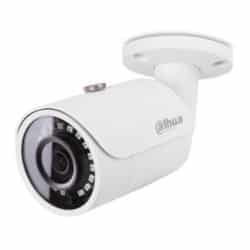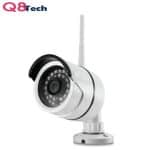CCTV Cameras ; types benefits features, surveillance system components, technical specifications Buying standards best services and solutions complete guide
CCTV Cameras Aims
Installation of CCTV surveillance cameras has become indispensable in
all places; homes, workplaces as well as vital and important facilities
under the law.
Security surveillance systems aim to maintain security, stability and safety of lives and property
- Recording events ( audio & video ) and store them on a recording device for many months.
- Advanced smart types are able to alert the user when a
movement, face or sound is detected in the place, so that they can act to
solve the problem or prevent a crime or danger.
- A real evidence if a crime has happened.
- A user can monitor what is happening.
Types of surveillance cameras systems

Analog Camera System
In this type the cameras can capture an analog video signal and transfer
that signal over coax cable to the Digital Video Recorder (DVR).
A camera can be powered by connecting directly to the power supply or by
using RG59 cable which bundles the video and the power cables.
Wireless Security Camera System
IP Wireless security camera system design is very similar to standard
IP camera system design except for the addition of wireless access points
inserted between the home network switch and the cameras.
IP / Network Security Camera System
A network camera captures an analog image, then the image is immediately converted to digital .
The digital video is broadcast over the local area network (LAN) using
Ethernet by a cable (CAT5 or CAT6) to the Network Video Recorder (NVR).
Different types of surveillance cameras
There are many types of surveillance cameras that can fit all security needs.
Outdoor camera
Made of more durable materials that make it suitable for installation in open air.
You can choose among large variety
- Wired or Wireless
- Wide-angle lens
- Bullet , Dome , box
- Infrared/night vision
- Day/night cameras
Indoor camera
They are installed indoors away from difficult weather factors knowing that good species tolerate heat and flame.
PTZ camera ( Pan-Tilt-Zoom )

flexible and can move in all directions
- 360 ° right-to-left horizontal rotation (Pan)
- 90 ° top-down tilt.
- ZOOM: The ability to zoom in and out.
- Covering a large area.
- The possibility of moving and directed towards the target being monitored and zoomed in and zoom.
- more than 37 times.
CCTV, NETWORK IP , Outdoor, Indoor PTZ Cameras
PTZ dome camera
It is a PTZ camera, but kept in a housing shaped like a dome.
These PTZ dome cameras have a full 360 degree Pan.
Fixed Lenses Cameras
It is known as a dome, a dome-shaped camera with a fixed lens that is
directed to observe a certain field or angle at a wide angle of view.
IP cameras

They are cameras that are connected directly to an Internet router and transmit data over a network.
Each camera has its own Static IP by which we can view the camera through
any computer or phone or a smart device connected to the internet.
Wireless security cameras

cameras that transmit a video and audio signal to a wireless receiver through a radio band.
Security Camera General Features
- Motion Detection.
- Wide Field of View
- High Resolution
- Clear Sound
- Night Vision
- An array of sizes and shapes
- Wide Dynamic Range
- Picture quality
- Motion sensor.
- Great connection capabilities
- High quality lenses.
- face recognition
The components of a surveillance system
main parts
- A security camera
- Device ( DVR or NVR )
- Media : it is the carrier medium ( cables or wireless signal ).
- Power to provide cameras with electricity
sub-components
- The Internet
- Hard Disk
- LCD
- Computer
- Switch
Buying standards for surveillance cameras
To get the suitable camera, there are some standards that we must be considered
- the specific type of camera
- brands & technology
- type of software
- Compatibility between DVR or NVR with the camera in terms of
- The number of cameras that can connect to the recorder.
- Number of audio inputs.
- Resolutions that the device can record it.
- Resolutions by which the device can display previous recordings.
- Resolution is measured in megapixels
720MP (hd) – 1080MP (full hd) – 1520MP – 1920MP
- Lens Size and quality.
- InfraRed
- LUX
- Lens type (variable – fixed – zoom lens) .
- zoom Measured in x
- Ability to store photos and videos in large areas for the longest time.
- Automatic recording when detecting movement or sound.
- Sending email alerts.
- Noise reduction.
DVR ( Digital Video Recorder)
A stand alone device looks like a TV receiver.
It records, manages and then displays the videos captured by the surveillance cameras.
The digital DVR can be connected to a display screen to display videos.
DVRs record video in a digital format to a disk drive, USB flash drive,
SD memory card, SSD or other local or networked mass storage device
NVR ( Network Video Recorder )
It records the videos captured by the surveillance cameras connected
- NVRs are distinct from DVRs as their input is from a network rather
than a direct connection to a video capture card or tuner.
Fields of the view
- Identify
- Recognize
- Detect
- Monitor
- Vehicle Recognition


0 Comments